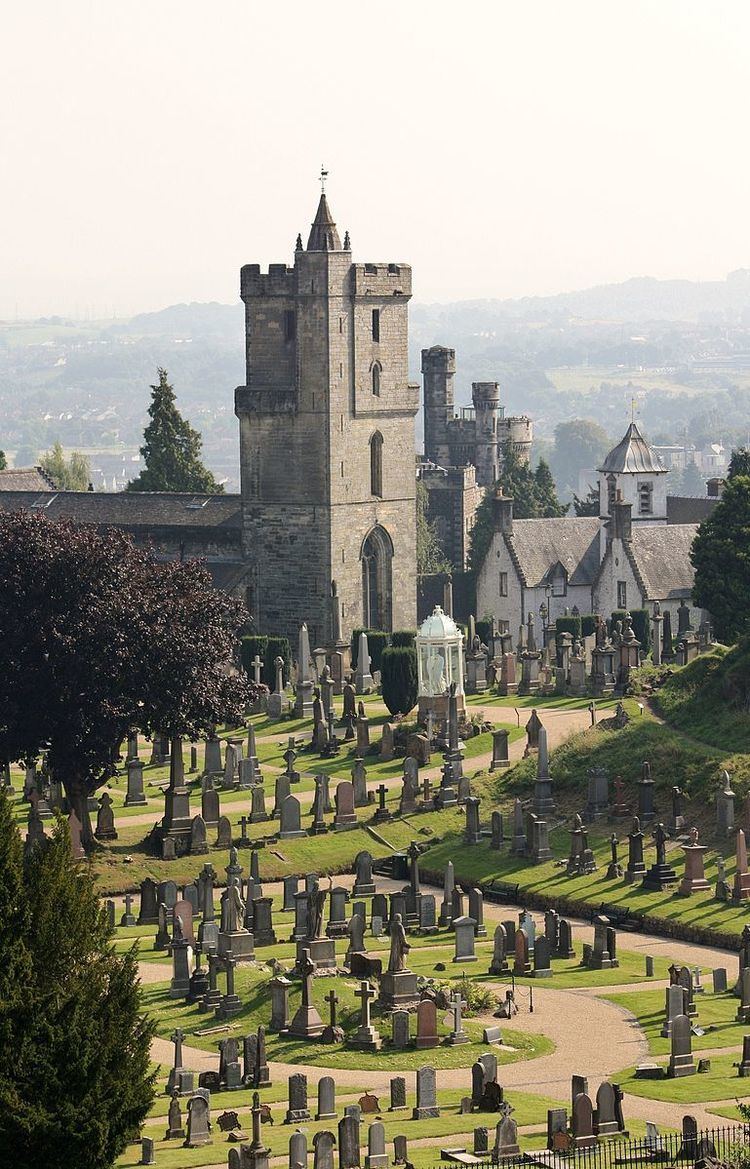Phone +44 1786 475275 | ||
 | ||
Similar Argyll's Lodging, Argyll & Sutherland Highland, Blair Drummond Safari Park, Wallace Monument, Doune Castle | ||
The Church of the Holy Rude is the medieval parish church of Stirling, Scotland. The church was founded in 1129 during the reign of David I, but earliest part of the present church dates from the 15th century. As such it is the second oldest building in Stirling after Stirling Castle, parts of which date from the later 14th century. The chancel and tower were added in the 16th century.
Contents
Stirling Castle has long been a favoured residence of the Scottish monarchs, and was developed as a Renaissance palace during the reigns of the later Stewart Kings. The Church of the Holy Rude, adjacent to the castle, became similarly associated with the monarchy, hosting royal baptisms and coronations. It is one of three churches still in use in Britain that have been the sites of coronations.
Oh holy night in the church of the holy rude stirling
History
The church was founded in 1129 but nothing of this early structure now remains due to a fire in 1405.
Construction on the new nave was underway by 1414, and based on the evidence of carved heraldry the vault of the nave was completed between 1440 and 1480. Work on the chancel did not commence until 1507 and completed around 1530 which was when the west tower was also extended to its current height. King James VI was crowned King of Scots in the church on 29 July 1567. Adam Bothwell, Bishop of Orkney performed the ceremony, and John Knox preached a sermon.
In the Siege of Stirling Castle in 1651 by General Monk, during the Wars of the Three Kingdoms, the church and churchyard suffered damage from musket shots, which is still visible.
Soon after, the controversial preacher James Erskine caused a schism in the congregation and a dividing wall was built which stood until 1936.
In 1940 the church was restored and the fine oak beam roof was re-exposed.
Stained Glass
The church contains many fine stained glass windows, mainly from the late 19th century, including examples by Ballantine & Co., Adam & Small, and Cottier & Co.
Graveyard
The church has a historic churchyard lying primarily to the west and north-west of the church. Stones date from the 16th century.
The churchyard was extended in 1851, creating the fascinating Valley Cemetery to the north, divided from the old cemetery by only a path. This contains a series of statues by Alexander Handyside Ritchie to figures of the Reformation.
The old graveyard contains a unique stone with a carved depiction of body snatching, marking the theft of Mary Stevenson (1767-1822) by James McNab, the local gravedigger who had buried her two days earlier, on 16 November 1822, aided by a friend, Daniel Mitchell. The body was passed to John Forrest, for dissection. The two men were caught, but released due to legal technicalities and a riot ensued. Mary's body was reburied and the stone carved to mark the strange event.
Graves of note in the old cemetery include:
The new cemetery to the north contains Charles Henry Greig, architect of Craig House Asylum in 1889.
